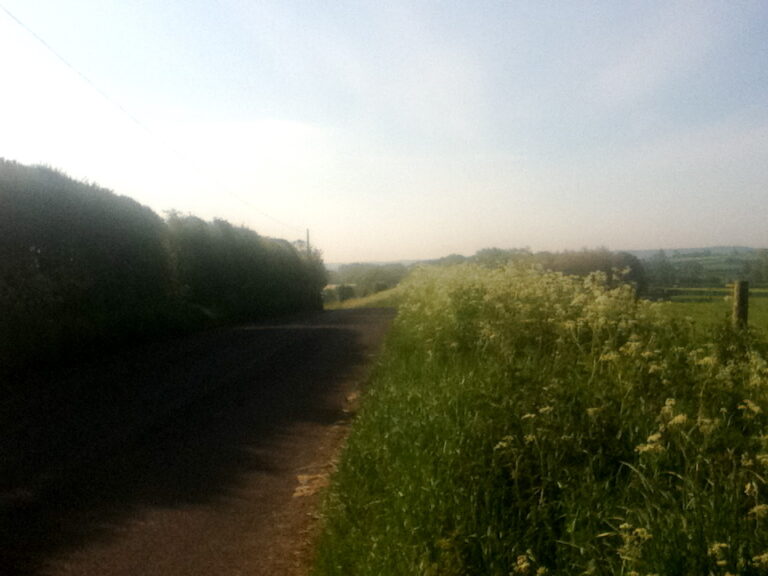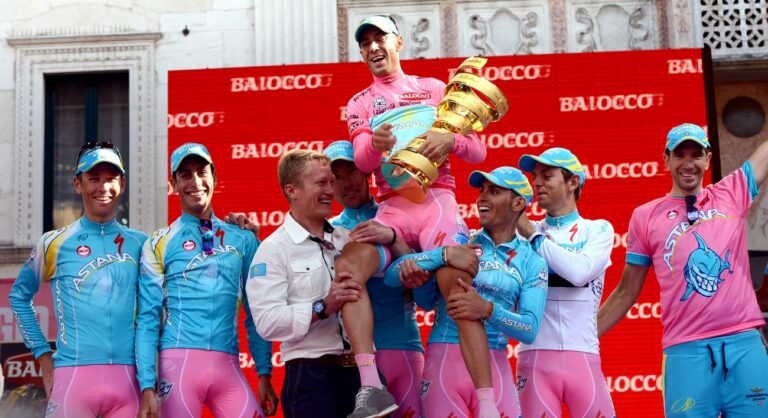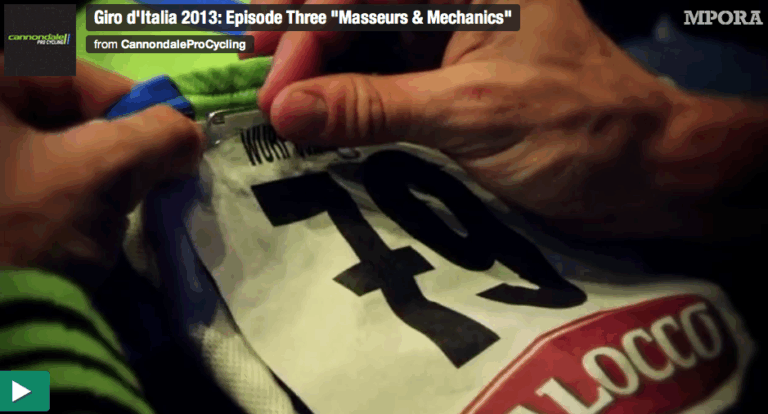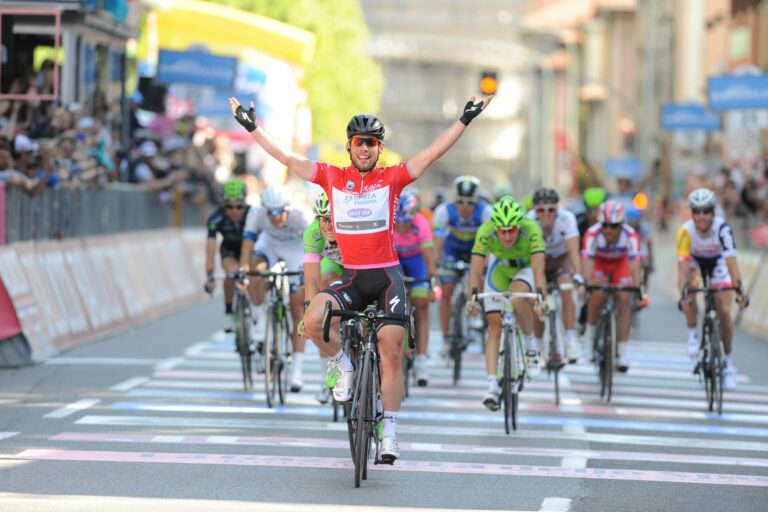It is perhaps easier to list the elite teams of professional cycling for whom Chris van Roosbroeck has not worked.
The genial Belgian, trusted mechanic of Armstrong, Abdujaparov and Azevedo, to name only the As, has prepared the bikes of riders competing at professional cycling’s elite level for an impressive 25 seasons, at Superconfex, Rabobank, US Postal and Astana, to name only a few, and for the last two years has plied his trade with Lotto-Belisol.
You get the feeling van Roosbroeck has seen it all in that time, though there is nothing of the braggart in his personable demeanour. Instead, reflections on some of cycling’s most intriguing races and characters emerge in matter of fact answers. Does the adrenaline flow at Paris-Roubaix for the seasoned mechanic? Always. What was Armstrong like? Nice. How did his rivalry with Contador unfold at Astana? The Spaniard was intimidated, unnecessarily. And so it continues.
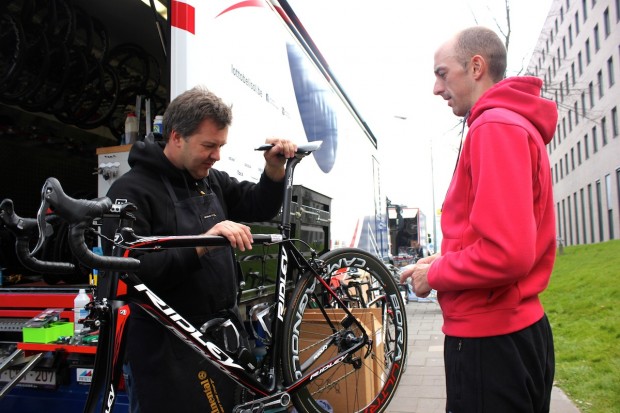
The unseasonal warmth of an unexpectedly glorious spring day is slowly cooling as van Roosbroeck jokes with Jelle Vanendert, second in the 2012 Amstel Gold Race, and the man who will lead Lotto-Belisol in this year’s edition the following day, as they set his saddle height (82.6cm, since you ask). The Belgian, who won brilliantly at Plateau de Beille in the 2011 Tour, has been using the perch on his training bike and insists on measuring its altitude now van Roosbroeck has returned it to the machine on which he will compete. It’s a jovial scene played out in waning but still beautiful sunlight on a lazy Saturday afternoon and marks a moment of perfect calm before the impending storm of the opening race of Ardennes Week, a hugely significant period for the Belgian team.
Our conversation begins as Vanendert drifts back inside the hotel behind the giant Lotto-Belisol truck from which van Roosbroeck works, while he makes final preparations to the fleet of Ridley Helium SL machines on which his riders will compete the following day. He screws a race number to each and racks them neatly beside the truck. This must be far from his first interview, and he has twice politely sent me away as he works to complete his preparations, on the first occasion with Vanendert’s machine to photograph: a not inconsiderable consolation. A bike, how ever idiosyncratic its set up, can only tell so much. The mechanic will say much more.
Van Roosbroeck has cycling in his blood. His father, Stef van Roosbroeck, rode professionally, on one occasion as partner to the late Gary Wiggins at the Six Days of Antwerp. The young Chris would attend his father’s races with his mother, and, perhaps more significantly, his uncle, mechanic to the great Raymond Poulidor, who finished on the podium of the Tour de France on eight occassions without winning the race. The teenaged Chris paid attention to his uncle’s teachings, learned his trade, travelled with him to races from the age of 15, and three years later joined him on a full-time basis. The pair worked together in professional cycling’s top tier for 11 years. The nephew’s pride as he recounts the story is evident.
The names that litter his CV will be instantly familiar to those who have followed professional cycling for the last 20 years. Supeconfex, Buckler, WordPerfect, Rabobank, US Postal, Discovery, Astana, and now Lotto-Belisol. “I started with Buckler in 1990,” he recalls. “I did a couple of years part-time before that with Superconfex with Van Poppel. So Superconfex, Buckler, then the name changed to WordPerfect, then we changed into Rabobank. Then in 2000, I moved to Domo Farm Frites, and then I moved to US Postal, Discovery Channel, Astana, and Lotto, but it’s basically four teams, with a lot of times the same manager, but a different sponsor.”
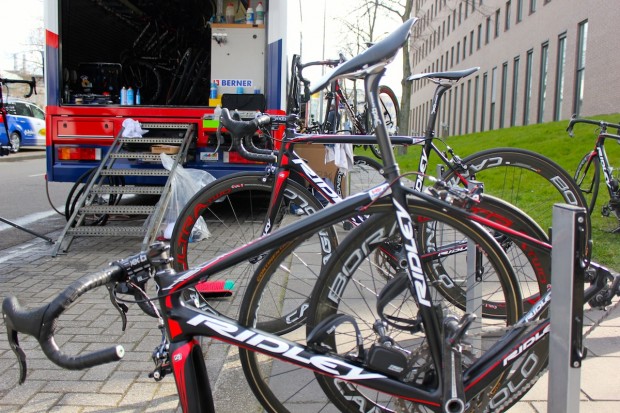
The importance of the spring Classics to Belgian teams cannot be overstated. Jurgen Roelandt’s podium finish at the Ronde van Vlaanderen provided some consolation for an otherwise barren campaign in the cobbled races for Lotto-Belisol, but Ardennes Week, offers fresh hope. The hills of Limburg, particularly, hold a significance for Lotto-Belisol, headquartered an hour away in Herentals, and represent home turf for the Neerpelt-born Vanendert.
For the mechanics, the demands presented by the cobbles of Flanders and Roubaix differ wildly from those made by the hilly Ardennes. The latter are easier for the mechanics. “You still work half a day full gas, but it’s not so bad. The Flemish Classics, there’s a lot more preparation – it’s a big difference,” says van Roosbroeck” Each rider will use the same gearing at Amstel Gold, and there is a greater uniformity in tyre choice. The teams use much the same set up as they do for the stage races. The truck behind us arrived from the Tour of the Basque Country. Van Roosbroeck, however, did not spend early April in Spain, but in Belgium and northern France.
“Its always special,” van Roosbroeck says of Roubaix. The first wave of adrenaline crashes over the team car 10km from the opening cobbled sector. “You did the recon in the winter with the guys and you know how hard they work for it. It can all be gone in a split second.” Roelandts was one of a host of top riders to suffer mechanical misfortune at Roubaix, puncturing twice within the same 10km stretch as Chavanel and Van Summeren, 50km from home. It is not always this way. Van Roosbroeck recalls two consecutive years with Rabobank in the late nineties when all eight riders finished without punctures. “You never forget that.” This year was different: eight punctures, some as the result of crashes, others from potholes – the unavoidable hazards of racing on cobbles.
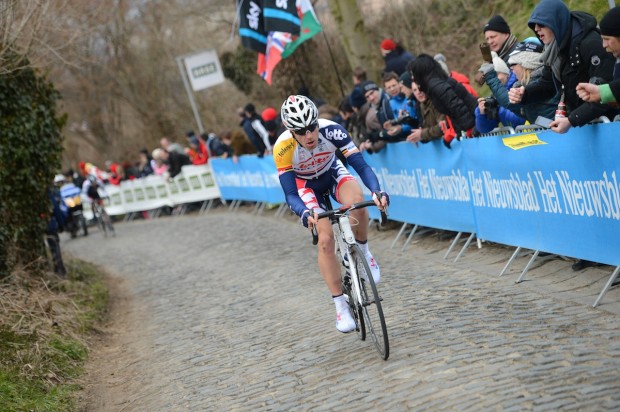
“The Classics is a lot here, you know,” van Roosbroeck says, tapping the side of his head. “It’s a lot in the mind. You need the will to do it.” He offers Juan Antonio Flecha as an example, a Spaniard who has made a specialism of the cobbles. “He’s good because he likes it so much.” The desire of riders like Roelandts and Vanendert, for whom the cobbles of Flanders and the hills of Limburg are still home roads, is easier to understand. “He’s crazy about these races,” van Roosbroeck says of Vanendert’s affinity with the Ardennes. Fifteen years with a Dutch team has given van Roosbroeck a particular affection for the Amstel Gold Race; one shared by his latest employer. “A lot of people say, ‘Ahh, Amstel, it’s not a real Classic’, but for me it’s like when QuickStep go to Flanders: we’re ready and we go.”
He plays down the rivalry with QuickStep, the only other Belgian team in the UCI WorldTour, claiming that it doesn’t apply to the staff, many of whom are likely to have worked together at other teams. For the riders, however, things are different, and at the Tour, where Cavendish, Greipe, and their respective sprint trains will go head-to-head, “they will make a match of it, for sure.”
As with Team Sky last year, Lotto-Belisol will attempt to “make a match of it” in the mountains as well as the sprints at this year’s Tour de France. They are ably equipped to do so, with Greipel for the flat stages, and Jurgen Van Den Broeck for the GC. Van Roosbroeck’s relationship with the reportedly ice-cold Van Den Broeck is warm, developed from the earliest races of the rider’s nine-year professional career, when he joined US Postal as a neo-pro. He sees first hand the efforts his countryman and near neighbour makes in training, most recently during a recce in Corsica, and believes his readiness for suffering and sacrifice will allow him “to play for the podium” on the spectacularly hard parcours that will mark the centenary Tour.
Van Den Broeck’s work ethic arises, unprompted, in conversations with other team members. His mechanic places him among the ten best stage racers in the world, and in the top six of those who will contest the Tour. The leap from sixth to third he believes isn’t great, and given the nature of the course, is within Van Den Broeck’s grasp. “It’s a good Tour for him,” he says. “It’s a really hard last week, with Ventoux and twice Alpe d’Huez in one day, so for him, it’s a really good shot this year, and he knows, and he does everything for it.”
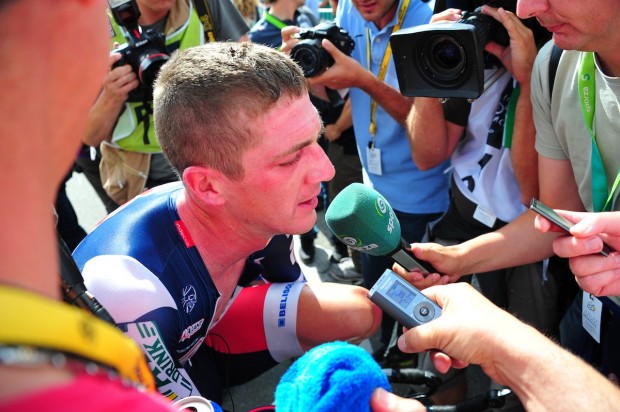
If Lotto-Belisol’s twin-track approach to the Tour seems ambitious – it proved too great a challenge even for Sky last season – it will not phase van Roosbroeck, who has seen it all. “I was with Superconfex in a team winning stages with Nijdam. You get a phone call from Bruyneel. ‘You want to come to my team? I want you in the car with me’. Ok. Wow. And then you move from winning stages and not caring in the mountains, and a lot of the time not caring in the time trials, to the most important thing being the time trial, and the mountains, and the training camp, and the recon. It’s still the same job, but it’s a totally different approach.”
The association with Johan Bruyneel was the longest of van Roosbroeck’s career and made him mechanic to the most famous, and now vilified, cyclist on the planet. What does he make of the Armstrong scandal, one that implicates Bruyneel, despite the manager’s continued denials, and engulfed the US Postal squad? How does he now regard that team and its achievements? “I’m really proud,” says van Roosbroeck, a defiant but unconvincing smile failing to mask the weariness in his eyes. He seems tired of the subject, one perhaps unfair to have raised, akin to grilling the RBS branch cashier on the actions of Fred Goodwin.
His most revealing insights, or perhaps, the insights most revealing of van Roosbroeck, do not concern the team’s disgraced leader, however. Asked to describe Armstrong, he answers in a word – “nice” – an adjective rarely, if ever, associated with the Texan. Less surprisingly, like most of those van Roosbroeck describes as “the top guys”, Armstrong knew what he wanted from his machine. “With Lance and with Trek, when he said, ‘I want this’, there was a call to America and someone started working. That’s the advantage of working with the biggest.” His greatest affection, however, is reserved for two of Armstrong’s domestiques: José Azevedo and José Luis Rubiera, men whose combination of friendliness and sacrifice have clearly earned van Roosbroeck’s lasting admiration.
The theme continues as the conversation turns to his most cherised memories. “When you go to the Tour de France with top guys, you’re there to win. Everybody is prepared to win. What I like most are the team time trials. Then you win with the guy who does the luggage to the guy who finishes on the bike. So for me the best memories are the team time trials with US Postal. You work together, you train together, you go to training camps, you travel, especially with those bikes, you can make a lot of time on them, the day comes and everything works out. For me, that’s a good feeling: winning team time trials in big races. When Lance wins a mountain top finish or Wiggins wins an individual time trial, it’s kind of logic, you know? That’s what they are there for. But with the team TT, the ninth guy to the top guy has to be in super condition that day. There’s no room for error.”
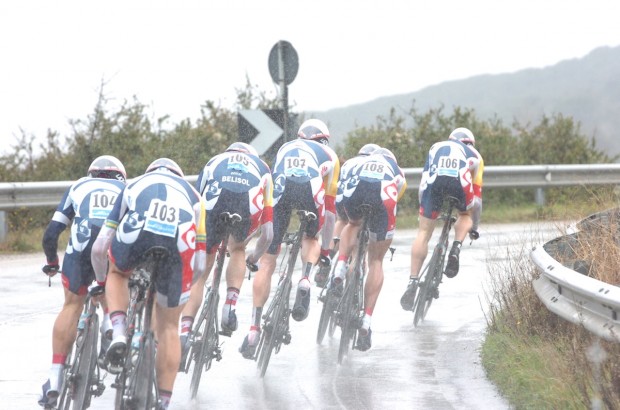
Pressure would certainly have mounted on the Astana squad assembled to contest the 2009 Tour de France. The return of Armstrong, aged 39, from a four-year hiatus to a team now led by a 26-year-old with three Grand Tour wins already on his palmares, was undoubtedly the story of the race’s 96th edition. “That was special,” van Roosbroeck, smiles. “It was not so bad as they like to say. For me, it was not so bad. I speak Spanish, and I was good with the Spanish side also.
“In the winter, there were some things. Contador wasn’t so happy. He was afraid, he was intimidated: his mistake, actually, because there was no reason why Contador should be intimidated by Lance. At that moment, he was by far the strongest stage rider. Nobody had doubts about that, but if you see Armstrong coming in the room, it’s a big personality. It’s not easy to put that aside. That was the biggest issue. In the Tour, there was a lot of stories, this and that. From my opinion, it wasn’t so bad.”
Van Roosbroeck and his seven colleagues will spend about 180 days on the road this year. The amount of travel has reduced as the number of team personnel has increased. During his early career, a team would employ four mechanics, who would then be split into pairs. Lotto-Belisol has eight mechanics, giving van Roosbroeck and his colleagues breaks of up to 10 days. Time away from races does not always mean time away from the team, however. A reconnaissance trip to Corsica with a directeur sportif and the team’s GC leader, Jurgen Van den Broeck, accounted for van Roosbroeck’s three-day break between Paris-Roubaix and the Amstel Gold Race.
Despite 25 seasons working at cycling’s top tier, van Roosbroeck is still enthused by the sport. He recognises the struggle faced by many races in February and March but welcomes its continued expansion, a source of concern to some. The future of cycling he believes, with the exception of the Monuments, lies outside of Europe. “I think it will be ok. I hope,” he says. “I’m just worried I’m too old, you know? I’m 43. I wish I was 22 with all the things that are going to come. “
RoadCyclingUK travelled as a guest of Ridley Bikes, supplier to the UCI WorldTour team, Lotto-Belisol

